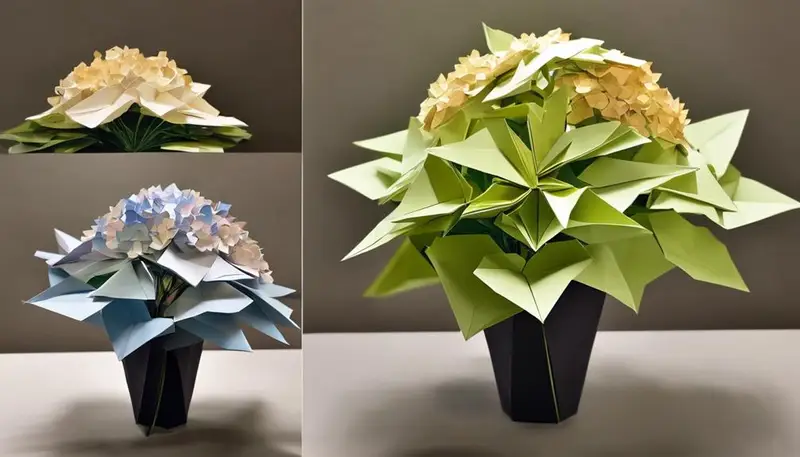Hydrangeas, with their lush foliage and vibrant blooms, present a captivating addition to any garden, offering a spectrum of colors from serene blues to vivacious pinks. This ornamental versatility, however, is matched by a set of demands and vulnerabilities that can challenge even the most diligent gardener.
From their stringent water needs to their sensitivity towards soil pH affecting bloom color, the cultivation of hydrangeas requires a nuanced understanding of horticultural practices. Furthermore, their allure to pests and specific climate sensitivities add layers of complexity to their care.
As we explore the multifaceted nature of hydrangeas, it becomes clear that their beauty is both a gift and a gauntlet, inviting a closer examination of how these challenges can be navigated to harness their full potential.
Key Takeaways
- Hydrangeas offer versatile bloom colors influenced by soil pH, enhancing garden aesthetics.
- They require regular care, including proper watering, pruning, and pest management, to thrive.
- Sensitive root systems demand careful handling and adequate soil conditions for optimal health.
- Companion planting with hydrangeas can create biodiverse, visually appealing garden spaces.
Stunning Visual Appeal
Hydrangeas captivate the senses with their vibrant and diverse bloom colors, serving as a testament to their stunning visual appeal in any garden setting. These plants boast large, showy flower heads that immediately draw the eye, making them an ideal choice for gardeners looking to create an eye-catching focal point. The range of colors available in different hydrangea varieties is broad, encompassing shades from soft pinks and deep blues to crisp whites and rich purples. This palette allows for customization and creativity in garden design, enabling the creation of a diverse visual experience.
Beyond their colorful blooms, hydrangeas are also prized for their lush green foliage, which adds another layer of visual appeal. The leaves provide a beautiful contrast to the bright flowers, enhancing the overall aesthetic of the plant. This combination of striking blooms and verdant foliage makes hydrangeas a versatile option for various landscaping styles, from formal garden arrangements to more casual, cottage-style settings. Their ability to adapt and enhance different garden aesthetics underscores their popularity and enduring appeal in the world of gardening.
Soil Ph and Color Change

While the stunning visual appeal of hydrangeas is undeniable, it is intriguing to note that the soil's pH level plays a crucial role in determining the color of their blooms. This unique characteristic sets hydrangeas apart from many other flowering plants.
Specifically, acidic soil conditions tend to produce blue hydrangea flowers, while alkaline soil leads to pink blooms. This phenomenon presents gardeners with the opportunity to somewhat control the coloration of their hydrangea flowers through soil modification.
To maintain or achieve the desired blue hue in hydrangea blooms, gardeners can use blueing agents. These agents adjust the soil's pH to be more acidic, thereby encouraging the development of blue flowers. It's important to note, however, that white hydrangeas are an exception to this rule. Regardless of the soil's pH level, white hydrangeas maintain their pristine color, unaffected by the acidity or alkalinity of the soil.
The debate over the preference for blue or pink blooms is a direct result of this soil-induced color variation. Ensuring proper soil conditions is crucial for enhancing and maintaining the desired color of hydrangea flowers, highlighting the importance of understanding and managing soil pH for successful hydrangea cultivation.
Watering Demands

Proper hydration is crucial for the health and bloom quality of hydrangeas, necessitating a diligent approach to their watering regimen. These plants demand consistent moisture to avoid wilting, particularly during the arid stretches of summer. However, gardeners must exercise caution to prevent overwatering, as excessive moisture can foster root rot, undermining the plant's health. Achieving this balance requires attentive care and understanding of the plant's needs.
Hydrangeas planted in containers present a unique challenge, often requiring more frequent watering than their in-ground counterparts due to faster soil drying. Regardless of the planting method, adopting a strategy of deep, infrequent watering promotes robust root development, which is preferable over superficial, frequent applications. This approach ensures that water reaches deeper into the soil, encouraging roots to grow downward in search of moisture and nutrients, which strengthens the plant's overall resilience.
To aid in moisture retention and reduce the need for constant watering, applying a layer of mulch around hydrangeas is highly recommended. Mulch acts as a barrier, minimizing evaporation and keeping the soil moist longer, thereby supporting a more stable moisture environment for these hydration-sensitive plants.
Pests and Diseases

Despite their captivating beauty, hydrangeas are not immune to the threats posed by various pests and diseases, necessitating vigilant care and preventive measures. These beloved garden plants can fall victim to a range of unwelcome visitors that threaten their health and appearance. To ensure these flowering shrubs continue to thrive and enchant, gardeners must adopt a proactive approach to pest and disease management.
Key challenges include:
- Aphids, spider mites, and Japanese beetles: These pests are particularly fond of hydrangeas, causing damage that can compromise the plant's vitality and aesthetic appeal.
- Careful monitoring and intervention: Regular inspection for these pests is essential. Early detection allows for timely action to mitigate damage and prevent infestations from escalating.
- Disruption of the garden ecosystem: The use of pesticides, while effective in controlling pests, can harm beneficial insects and disrupt the natural balance of the garden.
- Integrated pest management (IPM) strategies: Implementing IPM strategies can protect hydrangeas from common pests and diseases without relying solely on chemical controls. This approach encourages a healthier garden environment and supports the long-term wellbeing of hydrangea plants.
Space and Growth

As we explore the topic of 'Space and Growth' regarding hydrangeas, it's important to examine the critical aspects of adequate planting distance, growth rate, and sunlight exposure needs.
Understanding these facets is crucial for ensuring that hydrangeas thrive without compromising the health and aesthetic of surrounding plants.
This discussion aims to equip gardeners with the knowledge to effectively manage these vibrant and expansive plants within their garden spaces.
Adequate Planting Distance
Why is understanding the required planting distance for hydrangeas critical for their optimal growth and development in your garden?
Hydrangeas thrive best when given the right amount of space to expand, ensuring they receive adequate sunlight, air, and nutrients. This is not merely about the plant's immediate well-being but also about the long-term health and visual appeal of your garden. Observing the appropriate spacing guidelines can significantly influence the success of these beautiful shrubs.
- Prevents overcrowding: Ensures each plant has enough room to grow without competing for resources.
- Enhances air circulation: Reduces the risk of diseases by allowing air to flow freely around each plant.
- Optimizes nutrient access: Helps in preventing nutrient competition, allowing for healthier growth.
- Maintains garden aesthetics: Aids in achieving a balanced and accessible garden layout for maintenance tasks.
Growth Rate Insights
Understanding the required planting distance for hydrangeas sets the stage for exploring their growth rate, which is notably rapid and necessitates considerable space to avoid garden overcrowding.
The vigor of hydrangeas is evident in their expansive root systems, which require ample room to stretch and strengthen, underpinning the plant's overall health and bloom production. Proper spacing is more than a matter of aesthetics; it's a vital consideration to prevent competition for essential resources like nutrients, which could hinder the plants' development.
Overcrowding not only compromises the aesthetic appeal by causing stunted growth and fewer flowers but also predisposes the hydrangeas to diseases by hampering air circulation. Therefore, allocating sufficient space for each hydrangea is critical for their flourishing, ensuring they contribute beauty and vitality to the garden without the risk of detrimental crowding effects.
Sunlight Exposure Needs
Hydrangeas' health and aesthetic appeal are greatly influenced by their sunlight exposure, which varies across different species from partial shade to full sun. Understanding the unique needs of each species can significantly impact the plant's vitality and flowering capabilities.
- Morning Sunlight: Beneficial for hydrangeas, promoting healthy growth without the stress of intense heat.
- Afternoon Shade: Essential to protect plants from wilting under harsh afternoon sun, ensuring longevity and vibrancy.
- Proper Spacing: Prevents overcrowding, allowing for ample light penetration and air circulation, crucial for robust growth.
- Vibrant Blooms: Adequate sunlight exposure is key to developing strong stems and vivid flowers, enhancing the plant's overall visual appeal.
Seasonal Care Tips

As we explore the nuances of hydrangea care through the seasons, it's essential to focus on two critical aspects: winter protection strategies and summer watering guidelines.
Properly mulching and monitoring soil moisture are pivotal to safeguarding these plants against the extremes of cold and heat. These practices not only ensure the health and vitality of hydrangeas but also enhance their blooming potential.
Winter Protection Strategies
To ensure the longevity and health of hydrangeas through the cold months, employing effective winter protection strategies is indispensable. The cold season demands special attention to safeguard these plants, ensuring they emerge vibrant and healthy in spring. Key actions can significantly mitigate winter's harsh effects.
- Mulch around the base in late fall to insulate roots and protect from freezing temperatures.
- Use burlap or frost blankets to shield plants from harsh winds and frost.
- Avoid heavy pruning in late fall, which can spur new growth that may not survive winter.
- Deeply water before the ground freezes, ensuring adequate moisture during dormancy.
Monitoring weather forecasts is crucial, as additional measures may be required to protect hydrangeas from extreme cold spells.
Summer Watering Guidelines
Consistent watering during the summer is essential for maintaining the health and vigor of hydrangeas, combating the stress of heat and dry conditions. During this period, hydrangeas require regular hydration to prevent wilting and ensure they continue to grow optimally.
It's important to water deeply but infrequently, which encourages the development of deep roots and enhances the plant's resistance to drought. Additionally, applying a layer of mulch around the hydrangeas can significantly help in retaining soil moisture and reducing the rate of water evaporation during the hot summer days.
Gardeners should also make it a habit to regularly check the soil's moisture levels, ensuring that the hydrangeas are adequately watered and can thrive even under the summer heat.
Transplanting Challenges

Transplanting hydrangeas poses significant challenges due to their extensive root system, which requires meticulous handling for successful relocation. The intricate network of roots that hydrangeas develop is both a testament to their resilience and a hurdle when it comes to transplanting. Ensuring the health and survival of these plants during the transplant process necessitates a careful approach that respects their delicate nature.
Key considerations when transplanting hydrangeas include:
- Timing: Optimal transplanting should be done in fall or winter to minimize stress on the plant, leveraging the plant's dormant period to facilitate better recovery and adaptation to the new location.
- Sensitivity to Movement: The extensive root system of hydrangeas makes them particularly sensitive to disturbance. This sensitivity underscores the importance of employing proper transplanting techniques that minimize root damage.
- Risk of Failure: Improper handling during the transplanting process can lead to plant failure or death, highlighting the critical nature of understanding and respecting the specific needs of hydrangeas.
- Careful Handling: The roots and overall health of hydrangeas require gentle handling during the transplanting process to prevent damaging the intricate root system and compromising the plant's viability.
Conclusion
In conclusion, hydrangeas offer a visually appealing addition to gardens. Their capacity for color change based on soil pH is particularly noteworthy. However, their cultivation is not without challenges. These challenges include high watering demands, susceptibility to pests and diseases, space requirements, and the need for seasonal care and cautious transplanting.
Despite these drawbacks, with meticulous attention to their specific needs, hydrangeas can significantly enhance the aesthetic value and sensory experience of garden spaces.










